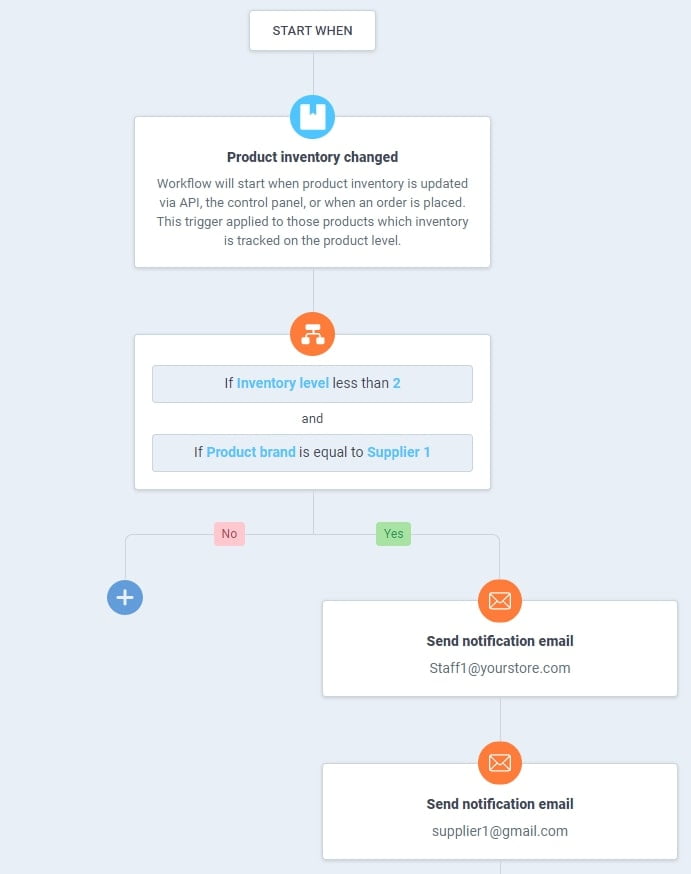Ownership and management of an eCommerce website are as hectic as any physical business store. You have to constantly search and employ multiple techniques for boosting the sales and revenue of the business. There’s nothing more exhilarating than watching your customer base and sales develop when you’re running an eCommerce store. However, as the number of staff and demand increases, especially in terms of marketing, scaling up can be a difficult process. Businesses should work to increase productivity by implementing automation workflows techniques for eCommerce sites.
The following workflow examples will help you to minimize manual tasks as well as human errors.
Wholesales pricing
Wholesale pricing is one of the most important parts of the eCommerce platform, as it enables businesses to make great profits. So, wholesale pricing automation workflows will help in boosting growth for your eCommerce business.
In case your business has discounts or dynamic pricing for bulk or B2B purchase, customers should be able to place an order effortlessly on the websites. Requiring customers to contact you for wholesale prices can be a barrier to purchase, increase workload and complicate buying processes.
For instance, on BigCommerce you can edit Bulk prices within specific products, or use the price lists feature to set different pricing strategies for separate groups of customers.

Furthermore, you can also create an automated workflow to add people with certain conditions to your Wholesale group, and discounts will be automatically applied to their order.

Real-Time Notification Of Low Stock Level
The stock-up stores can serve their customers to a greater extent. The store with full-stock capability can make sure the next-day deliveries. The next-day deliveries have become an essential part of the eCommerce platform deliveries. Sometimes, employees may not track whether the stocks are decreasing or not. So, you should automate real-time notification of low stock level workflow.
For example, you can use the following workflow to notify staff members of low inventory and at the same time send a reorder email to suppliers.

Product And Inventory Data Sync Across Channels
Employees may find it hard to retrieve the information about products and inventory from other platforms manually. So, we recommend you to automate the workflow product and inventory data sync across eCommerce and other channels.
Businesses can achieve this by implementing an inventory management system. The synced data enables the employees to work smoothly and most efficiently. Moreover, it helps decrease data errors and the risks of overselling or underselling.
Emailing order tracking information
Another critical automation workflow is emails of order tracking information. Order processing status would occupy most of attention and energy of the customers. Automatically include order tracking information in order confirmation or status emails will save time for customers as well as the effort of your customer services team.
So, automate the emails and work smartly towards the achievement of larger organizational goals.
Auto Responding With Chatbots
Chatbots have made a lot of customer support tasks easier for business owners. Nowadays, business owners can buy chatbot software services and set up so that AI chatbots can automatically respond to people.
Each eCommerce store will have a set of FAQs and commonly asked questions with answer scripts. So chatbots can use them to reply to customers instantly. This will reduce the workload of customer services as well as increase customer satisfaction with 24/7 support.
Cart Abandonment Emails
Another strategy to rescue revenue on an eCommerce site is to implement cart abandonment email automation. Cart abandonment is an act in which a person adds products to their shopping cart. However, he or she does not complete the buying process. So, sending these emails helps increase conversion rate by encouraging customers to complete the checkout step.
Customer segmentation
Customer segmentation is a process in which companies divide the groups of customers. Each customer segmentation group has a common factor that you can use in personalization, product recommendation, and other activities to boost sales.
As the number of customers grows, it can be time-consuming to add them to different groups. Segmenting customers can be less exhausting with the help of automation software. For example, on BigCommerce and Shopify, you can use Atom8 to automate customer segmentation and tagging by various conditions like lifetime value, joining date, or purchase behavior.

Conclusion
These are the top automation workflows that would enable the business to experience tremendous growth. This is indeed one of the best techniques for reducing workload, increasing efficiency and enhancing the productivity levels of the team.








